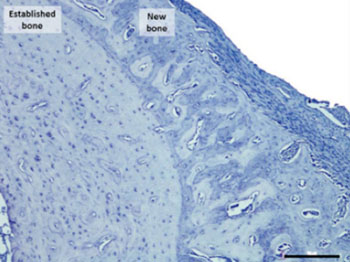Muscle-Pacing Technology Found to Increase Targeted Bone Volume by 30%
By LabMedica International staff writers
Posted on 03 Jul 2014
In an important advance for the health of older individuals, researchers have developed a new way to target bone growth. As people age, their bones lose density, and particularly in women after the menopause, become more brittle. The new technique offers the possibility of more effective treatment than currently available. The muscle-pacing technology revealed that the lab rats in the study gained 30% of bone within the targeted areas.Posted on 03 Jul 2014
The new technology was developed by researchers from the University of Liverpool’s (UK) Institute of Aging and Chronic Disease. Prof. Jonathan Jarvis, from Liverpool John Moores University designed miniature muscle pacemakers that were used in the University of Liverpool labs to generate contractions in the muscles of the legs of rats over 28 days. University of Liverpool PhD student Paula Vickerton led the research. She said, “Bone disease and fragility are affecting an increasing proportion of our population. However, existing treatments are nonspecific, affecting whole bones and not just the weaker regions.”

Image: The muscle pacing method used in the study saw the rats gain 30% of bone within the targeted areas (Photo courtesy of the University of Liverpool).
Using the muscle-pacing technique, the rats gained 30% of bone within the targeted areas. Ms. Vickerton’s supervisor, Dr. Nathan Jeffery, said, “This method has been shown to increase the amount of bone and raises the possibility of being developed into a treatment for people who are at risk of the many complications that weakened bone can bring.”
The study’s findings were published online and slated for the August 7, 2014 issue of the journal Proceedings of the Royal Society B: Biological Sciences.
Related Links:
University of Liverpool













